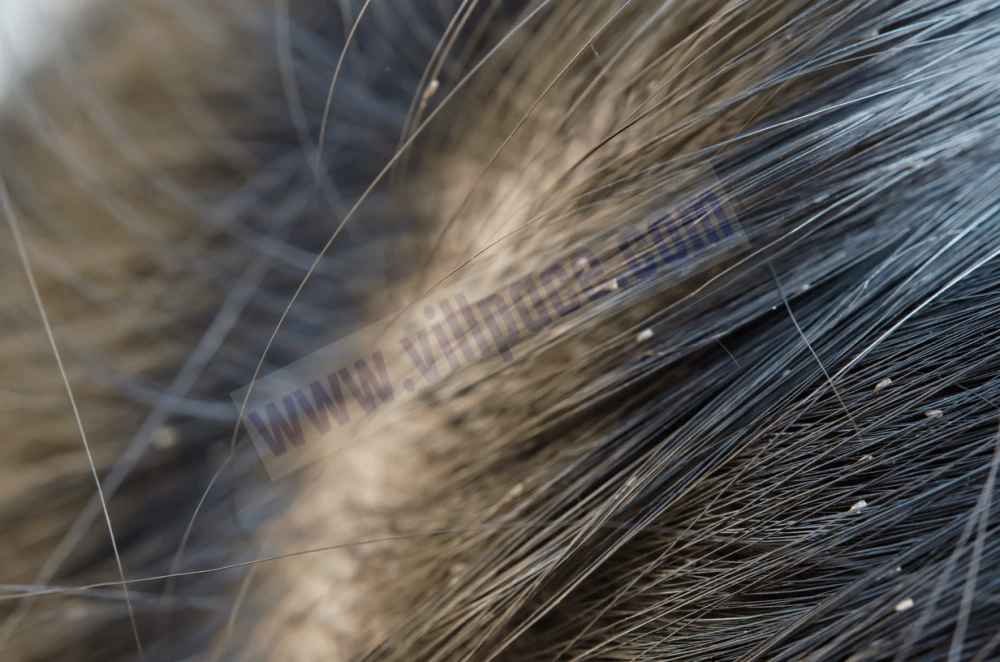If you notice a white spot on your child’s head, it could be just a dandruff or an early form of lice. However, it is best to get rid of them as soon as possible, since they are really unpleasant to see and being in close contact with them is never a good idea. If you have concerns about your lice situation, different methods can help get rid of them.
While it is true that head lice can be very unpleasant at first, they are not life-threatening. However, they can lead to some diseases and you should get rid of them as soon as possible.
You must be very careful when dealing with lice because they can spread easily through contact with the infected. They can also transfer to another human being by using the same towel or pillow.
What Do Lice Look Like?
Lice are small, wingless insects. They have 6 legs, but can’t jump or fly. Adult lice are tan to grayish-white in color and about the size of a sesame seed. Baby lice, called nymphs, are about 1/16 inch long when they hatch and look like smaller, white versions of the adults.

Lice eggs, or nits, are tiny yellow, tan, or brown dots before they hatch. After hatching, they’re empty shells that stay firmly attached to hair shafts.
What Do Head Lice Look Like?
Head lice are small, wingless insects that live on the human head and feed on blood from the scalp. They’re very tiny about the size of a sesame seed so they can be hard to spot.
Head lice are spread through direct contact, and often by sharing hats, combs, brushes, or other personal items with someone who has lice. Lice can’t fly or jump, but they can crawl quickly. They may also crawl from head to head when people hug or lean in together.
Lice eggs, called nits, are attached to the base of a hair strand close to the scalp. The eggs are oval-shaped and yellow to white in color. They’re difficult to remove without special shampoo or conditioner because they cling tightly to each hair strand.
If you have long hair, you may also see dark flecks on your neck or shoulders. These could be dead lice or lice droppings (feces).
Types of Lice
The most common types of lice infestation are head lice, body lice and pubic lice.
Head lice
Head lice live in the hair on the head. They lay their eggs (nits) on or near the hair shaft, usually no more than 1/4 inch away from the scalp. The eggs hatch in 8 to 9 days, and the empty egg shells remain firmly attached to the hair shaft. Nits that are farther away from the scalp may not be viable.
Body lice
Body lice are larger than head lice and have longer legs. Body lice live in clothing and bedding, where they lay their eggs. They only move to the skin for feeding for about 5 minutes at a time.
Pubic lice
Pubic lice, also called crab lice or crabs, are larger than head and body lice. The pubic area is their preferred environment, but they can also spread to other coarse body hair, such as armpits and eyebrows. They don’t attach their eggs to hair; instead, they attach them directly to coarse hair shafts.
Who Gets Head Lice?
Head lice are a common problem for school children, but they can infest anyone who comes in contact with an infected person. They’re spread by direct head-to-head contact, so kids who play sports together or who have sleepovers are more likely to get lice. Lice survive for about 24 hours when removed from their host’s hair. In theory, you could get head lice from an infected hat or pillowcase, but this is pretty rare.
Lice have long been associated with poor hygiene, but that’s just a myth. In fact, clean hair is easier for lice to move around on than dirty hair, so it’s easier to become infested if your hair is squeaky clean.
When it comes to visualizing how big a louse is, it can be hard to tell from just reading the numbers. So we’ve put together a complete set of head lice pictures actual size.
If you’re looking for information on how much head lice actually grow, keep reading. In addition to providing you with the most accurate head lice pictures actual size, we’ll tell you everything there is to know about the growth stages of lice.
What Types Of Lice Grow?
Every type of louse undergoes metamorphosis and grows in size as it moves through its life cycle. However, only female head lice undergo any major changes in body size as they mature (which explains why male and female head lice are so easy to distinguish from one another).

Mark Thompson, a seasoned pest controller, is renowned for his expertise in keeping homes and businesses free from unwanted intruders. With a passion for environmental sustainability and a deep understanding of pest behavior, Mark has become a trusted authority in the industry.